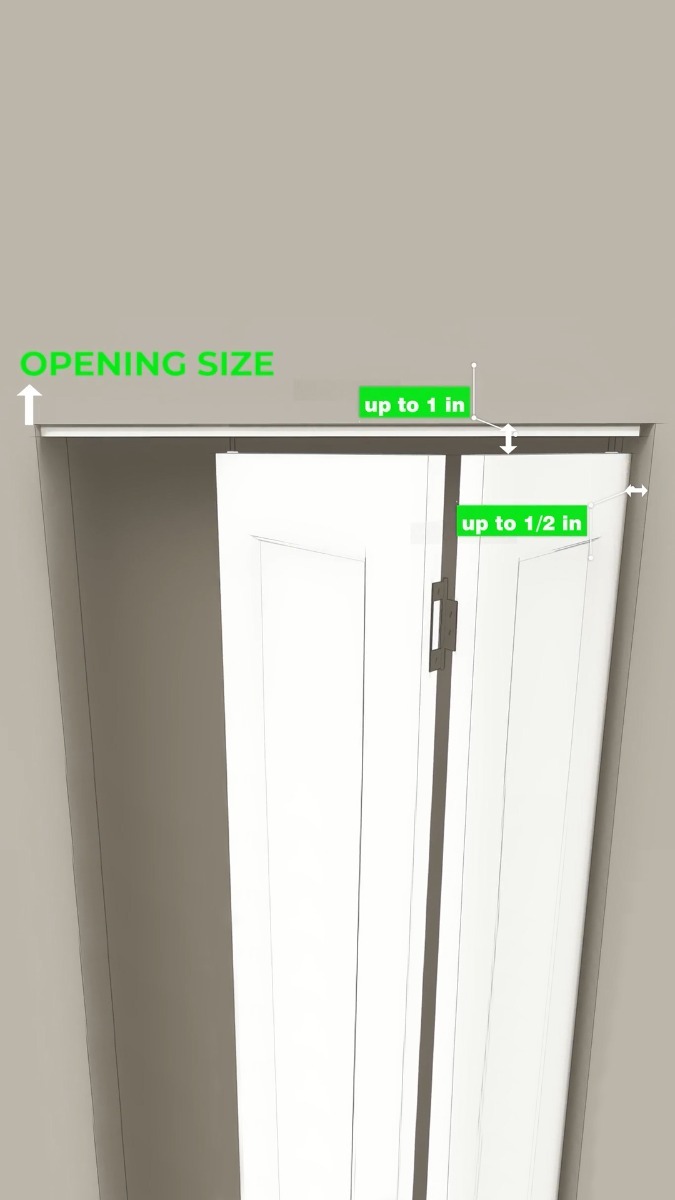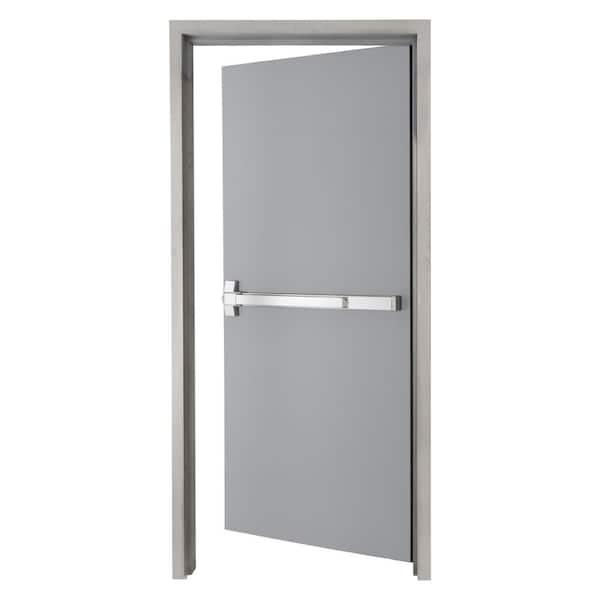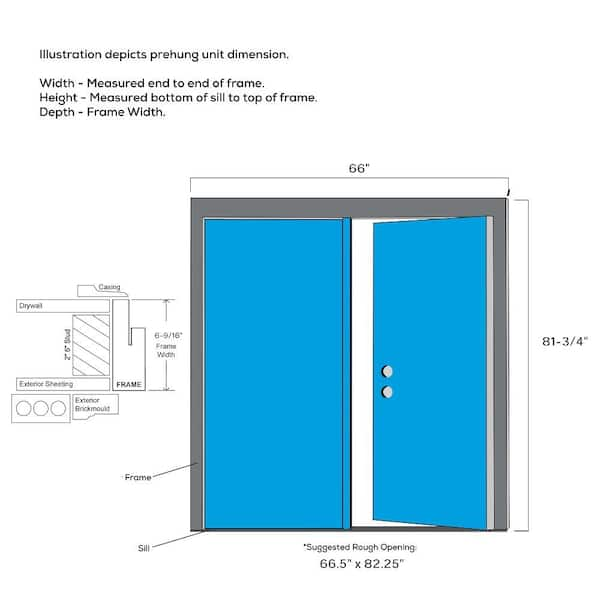The standard rough opening height for interior doors is typically 80 inches. This allows for proper clearance.
When installing interior doors, it is crucial to ensure the rough opening height is correct to avoid any issues with the door fitting properly. By adhering to the standard height of 80 inches, you can ensure that your interior door will open and close smoothly without any obstructions.
Proper measurement and installation of the rough opening height will also contribute to the overall aesthetics and functionality of the door within the space. Whether you are renovating an existing space or building a new one, paying attention to these details will result in a seamless finished look that adds value and appeal to the interior design. So remember, always measure twice and cut once when it comes to rough opening heights for interior doors.

Credit: thirstymag.com
Analyzing Door Types
Analyzing Door Types: When it comes to selecting the right interior door for your space, it is crucial to understand the various door types available in the market.
Distinguishing Between Standard And Custom Doors:
Standard doors are pre-made, have fixed measurements, and are readily available in most stores. In contrast, custom doors are tailored to fit specific openings and can be customized in terms of size, design, and material.
Considerations For Different Interior Door Types:
- Solid core doors: Provide sound insulation and are more solid than hollow core doors.
- Hollow core doors: Lightweight and cost-effective, ideal for rooms that don’t require soundproofing.
- French doors: Add elegance and allow natural light to flow between spaces.
- Bifold doors: Perfect for closets or spaces with limited swing space.
Before choosing a door, consider the function and aesthetics of the room. Each door type has advantages and is suitable for different interior spaces.

Credit: www.homedepot.com
Understanding Rough Opening Height
The rough opening height refers to the vertical space required to accommodate an interior door, including the frame and necessary clearance.
Ensuring the correct rough opening height is vital for a seamless door installation process and proper functionality.
This measurement directly impacts the overall appearance and functionality of the door.
Incorrect rough opening height can lead to issues such as door misalignment or difficulty in opening and closing.
Determining Rough Opening Height For Interior Doors
When installing interior doors, it’s crucial to consider the rough opening height to ensure a proper fit. Determining the right rough opening height for interior doors involves precise measurements and an understanding of various factors that can affect the final result. This guide will help you measure for standard interior doors and consider the factors that influence the rough opening height for custom doors.
Measuring For Standard Interior Doors
Before commencing with the installation of standard interior doors, accurate measurements of the rough opening height are essential. The following steps can help you in measuring for standard interior doors:
- Measure the height of the door frame opening from the finished floor to the top of the space.
- Account for the necessary clearance for the door to swing freely and open and close without obstruction.
- Consider the thickness of the flooring material, as it can affect the final height of the rough opening.
Factors Affecting Rough Opening Height For Custom Doors
When dealing with custom doors, several factors come into play that can affect the rough opening height. Here are the key aspects to consider when determining the rough opening height for custom doors:
- Custom Design: Unique door designs may require specific dimensions, impacting the rough opening height.
- Hardware Specifications: The hardware and accessories used with the door can influence the space needed for proper installation.
- Architectural Features: Architectural elements such as transoms or sidelights may alter the standard rough opening height requirements.
Addressing Common Challenges
When it comes to installing interior doors, one of the common challenges that homeowners and contractors face is determining the rough opening height for the door. This is especially important as it directly impacts the installation process and the overall functionality of the door. In this section, we will address two common challenges that often arise when dealing with rough opening height for interior doors: Dealing with Non-Standard Ceiling Heights and Adapting to Existing Structures.
Dealing With Non-standard Ceiling Heights
Non-standard ceiling heights can pose a problem when it comes to determining the rough opening height for interior doors. Whether you have low ceilings or high ceilings, finding a door that fits perfectly can be a challenge. Here are a few tips to help you navigate this challenge:
- Measure the ceiling height: Begin by measuring the height from the floor to the ceiling. This will give you an accurate measurement to work with.
- Consider the door frame: Take into account the door frame height when selecting a door. Ensure that the rough opening height includes the frame height to ensure a proper fit.
- Opt for custom doors: If you have a non-standard ceiling height, it may be worth considering custom-made doors. These doors can be tailored to fit your exact requirements, ensuring a seamless and aesthetic appearance.
- Consult a professional: If you’re unsure about measuring or selecting the right door for your non-standard ceiling height, it’s always a good idea to seek advice from a professional. They can provide guidance based on their expertise and experience.
Adapting To Existing Structures
Adapting to existing structures can present additional challenges when determining the rough opening height for interior doors. Whether you’re working with an older home or a unique architectural design, here are some strategies to overcome these challenges:
- Assess the structural limitations: Before determining the rough opening height, carefully assess any structural limitations that may exist. Consider factors such as load-bearing walls, support beams, or other obstructions that may affect the door installation.
- Modify the opening: In some cases, it may be necessary to modify the existing opening to accommodate the desired door height. Consult with a professional to understand the feasibility and potential impacts of such modifications.
- Explore alternative door options: If adapting to existing structures proves to be too difficult or costly, consider alternative door options such as pocket doors or barn doors. These types of doors can be a great solution when dealing with limited space or unique structures.
- Coordinate with a contractor: Consulting with a professional contractor who has experience working with existing structures can be invaluable. They can provide insights and recommendations tailored to your specific situation, ensuring a successful and hassle-free installation.
Optimizing Interior Door Performance
When it comes to interior doors, ensuring their optimal performance is essential for both functional and aesthetic reasons. To achieve this, various factors must be taken into consideration, such as the rough opening height. In this article, we will explore how to optimize interior door performance by focusing on two key aspects: clearing and accessibility, as well as aesthetic and functional considerations.
Considering Clearances And Accessibility
Clearances and accessibility play crucial roles in determining the rough opening height for interior doors. These factors not only impact the ease of movement but also affect the overall functionality and safety of the door. Here are a few key points to keep in mind:
- Allow sufficient clearance above the door to accommodate any door hardware, such as doorknobs, levers, or closers. This ensures smooth operations without hindrances or obstructions during everyday use.
- Consider the door’s purpose and location to determine the appropriate rough opening height. For example, doors in commercial spaces may require taller clearances to accommodate individuals with disabilities, while residential doors typically have standard height requirements.
- Ensure adequate headroom clearance for tall individuals by positioning the rough opening height at a suitable level. This avoids any discomfort or potential hazards when passing through the door.
- Consult relevant building codes and guidelines to meet accessibility standards, especially in areas where compliance is mandatory.
Enhancing Aesthetic And Functional Considerations
Aside from clearances and accessibility, optimizing interior door performance involves considering both aesthetic and functional aspects. These considerations aim to enhance the overall visual appeal and functionality of the door. Here’s what you need to know:
- Choose the appropriate door height based on the desired visual proportions and harmony with the room’s overall design. A door that complements the space adds to the overall aesthetics.
- Consider the purpose of the room when determining the rough opening height. For example, rooms with higher ceilings may benefit from taller doors to create a sense of grandeur.
- Ensure the door’s height aligns with other architectural elements within the space, such as windows or built-in cabinetry. This creates a cohesive and balanced look throughout.
- Evaluate the functionality of the door by considering factors such as privacy requirements, noise control, and desired levels of natural light transmission. Selecting the right height promotes optimal functionality and comfort.

Credit: www.linkedin.com
Frequently Asked Questions For Rough Opening Height For Interior Doors
How Tall Should An Interior Door Rough Opening Be?
The rough opening for an interior door should be 2 inches taller than the actual height of the door. This accounts for the door frame and allows for proper installation and clearance.
What Is The Standard Rough Opening Height For Interior Doors?
The standard rough opening height for interior doors is typically around 82 inches. However, this can vary depending on the specific door style and manufacturer’s recommendations.
Can You Adjust The Rough Opening Height For An Interior Door?
Yes, it is possible to adjust the rough opening height for an interior door. However, it is important to consult with a professional contractor or follow the manufacturer’s instructions to ensure proper installation and prevent any structural issues.
Conclusion
Understanding the rough opening height for interior doors is crucial for a successful installation. By following the standard guidelines and considering various factors such as door thickness and flooring, you can ensure a seamless and functional result. Paying attention to these details will help you achieve a polished and professional finish for your interior doors.


